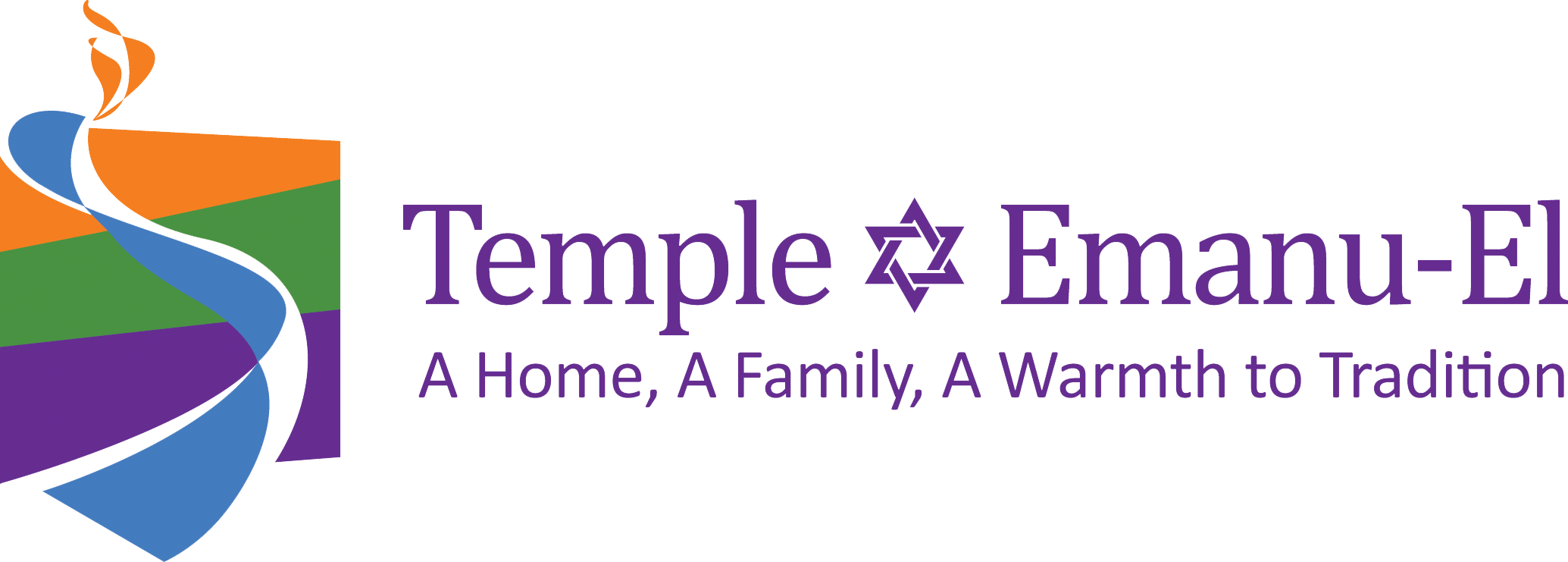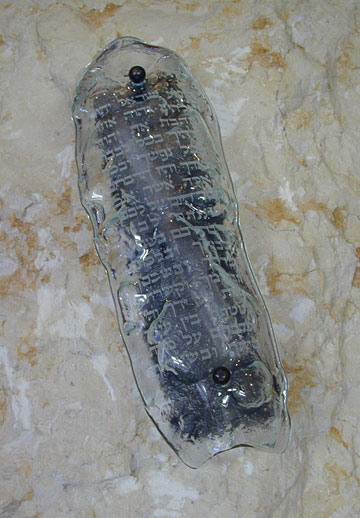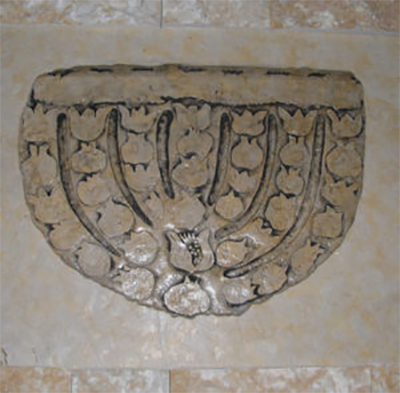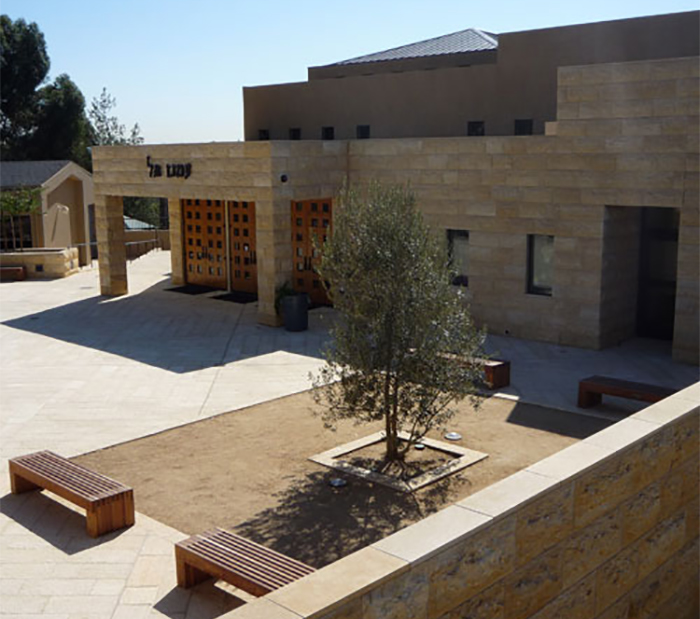
Our Sanctuary
Temple Emanu-El began raising funds in 2003 to build a new Sanctuary and Social Hall to better serve the needs of our congregation. Shortly thereafter architectural renderings gave birth to a new design. Construction began in the spring of 2007 and the new facility was dedicated on September 14, 2008. The new facility includes a courtyard with meditation area and fountain, lobby, gift shop, sanctuary, social hall, modern kitchen, simcha room and cantorial soloist office.
The courtyard and wall of Temple Emanu-El’s Sanctuary were built with Jerusalem stone brought from Israel and the entrance gate features a menorah and pomegranate trees. The theme of the new building was taken from Amos chapter 5, verse 24: “Let justice roll down as waters, righteousness as a mighty stream.” The stained glass windows representing this theme adorn both sides of the Bima. Twenty other smaller windows show the ongoing flow of water, which represents Jewish history, learning and God’s presence.
Bima
Ark Doors
Designed by Laurie Gross, the cast glass Ark doors form a cascading waterfall, which teaches us that justice will “roll down” through the teaching and living of Torah in our daily lives. The handles, two Hebrew letters, both Yod, form one of God’s Names, the Source of our tradition. The doors are translucent so that the Torah scrolls may be seen through them to teach us that God’s teaching is accessible to all.
Ner Tamid (Eternal Light)
This lamp is kindled above the Ark in every synagogue. This particular design is of blown glass, like a perpetual flame surrounded by a ribbon of bronze. Our tradition teaches that the light of God’s teaching will not go out so long as our people remain committed to bringing justice and righteousness to the world. Designed by Laurie Gross and Susan Jordan, our Ner Tamid is solar powered to remind us of the ecological value and importance of protecting God’s planet.
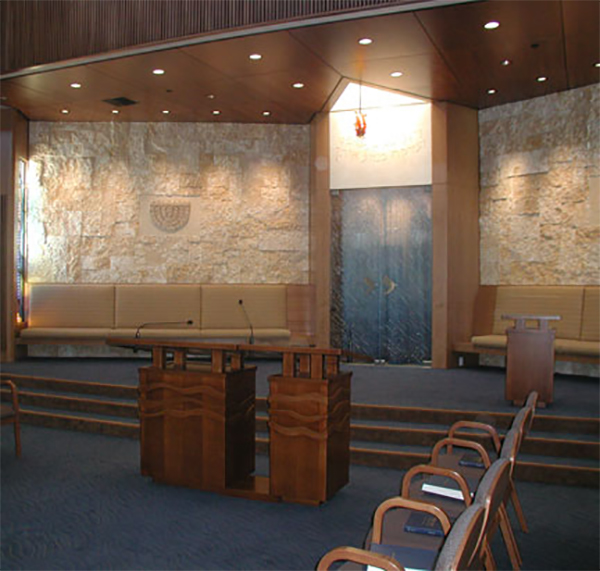
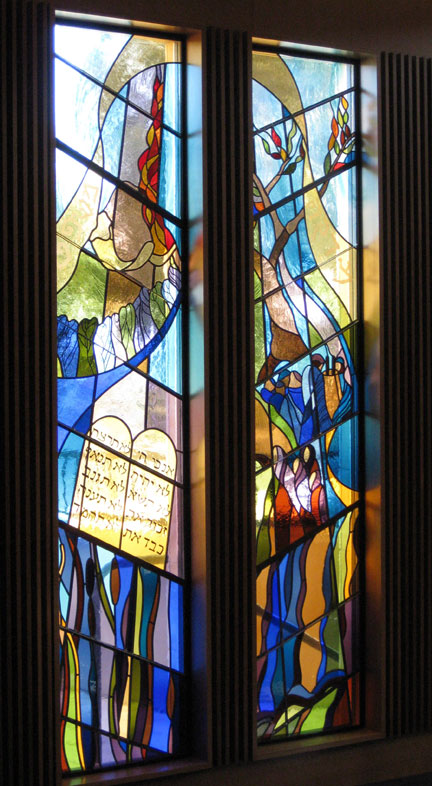
Stained Glass Windows
On the left side of the Sanctuary are two windows:
Mishpaht – Justice. The bottom of the window depicts the reeds of the Nile in Egypt. Rising above this we see the tablets of the Ten Commandments. Above them, the Israelites are seen gathering at the base of Mount Sinai and hidden within the form of the mountain is a shofar – a ram’s horn. The Torah text says the sound of the ram’s horn was heard as the people gathered to hear God’s words. Rising above the mountain is the pillar of fire that led our people through the wilderness. The pillar also takes the shape of a Havdalah candle (the braided candle with multiple wicks), used in the ritual marking the conclusion of Shabbat – the Sabbath. On a “ribbon” in the window is the Hebrew word for justice, mishpaht, connecting to the next window.
Tzedakah – Righteousness At the bottom of this window are images of waters rushing down like a waterfall, a symbol of the force of righteousness in the world. Above this, we see the women and men gathering for the first public reading from the Torah scroll. This tradition began with the return of the exiles from Babylon to Jerusalem around 521 BCE. Rising above this scene, you will find the Etz Chayim – the Tree of Life. Torah, in Jewish tradition, is referred to as the Tree of Life – Etz Chayim.
On the right side of the Sanctuary:
There are two windows exploring the founding generations of the Jewish people who began the Jewish journey with God. The first window on the right is for the Avot – the Patriarchs. In the middle of the window descending from the top are images of Abraham embracing his son, Isaac, and Isaac embracing Jacob. The three are wrapped in the tallitot and tzitzit, prayer shawls and ritual fringes that remind us of the 613 Mitzvot, commandments enumerated in the Torah. Below Abraham, Isaac and Jacob are waves of water and images of tents, based on the words of the blessing of Baalam, “Mah tovu ohalechah Yaakov! – How lovely are your tents, O Jacob!” Jacob, who becomes Israel, is the father of the twelve tribes of Israel. The top of the window depicts Shofarot – ram’s horns, reminding us of the “binding of Isaac” and our eternal covenant with God.
The last window is for the Imahot – the Matriarchs. Gathered together, you see four female figures – Sarah, Rebecca, Rachel and Leah. They stand together at the well, as women frequently did in ancient times. The well, with its water, is a symbol of life and Torah – learning in our Jewish tradition. The stones of the well remind us of the story about how Rebecca chooses to return with Abraham’s servant to marry Abraham’s son, Isaac. Above the head of the women are the cycles of the moon, which represent the celebration of Rosh Chodesh – the New Moon, or new month on the Jewish calendar. Rosh Chodesh is often regarded as a women’s holiday.
© 2008 Sacred Objects Designed & Created by Laurie Gross Studios: Laurie Gross & Susan Jordan
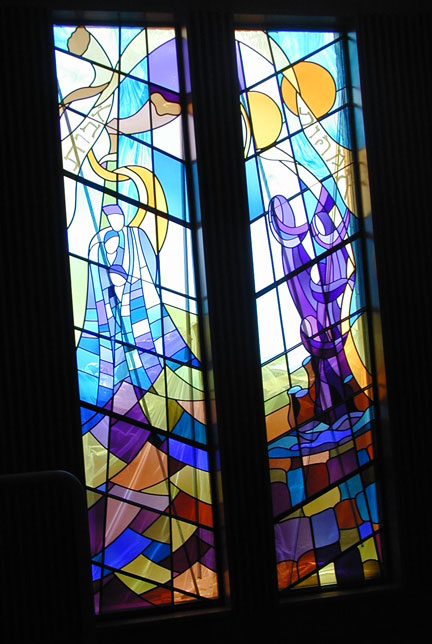
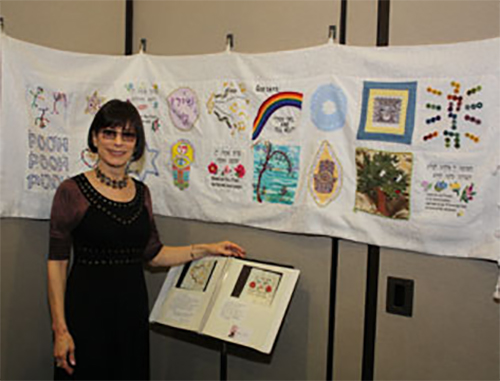
Mi Shebeirach Tapestry
On the front left hand wall of the Sanctuary, you will find one panel of a larger Tapestry of Blessing and Healing. Originally begun by Arlene Miller, each panel contains artwork squares created by individuals, groups or families which form prayers for healing. One panel is taken down each week during the Shabbat morning service and brought to the Bima for those who wish to stand in its embrace. This concept, which originated in our congregation, has now spread around the world. We encourage you to examine the Tapestry and read the explanations of each square found in the album adjacent to the Tapestry.
